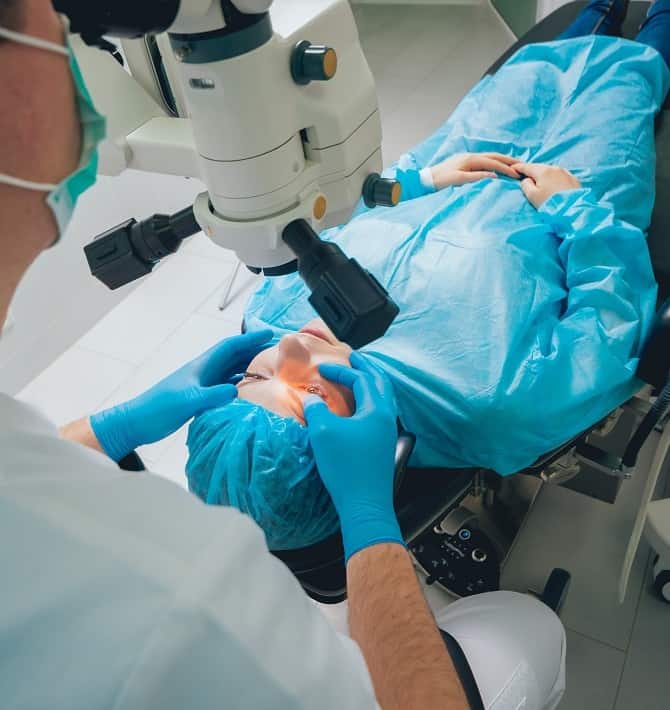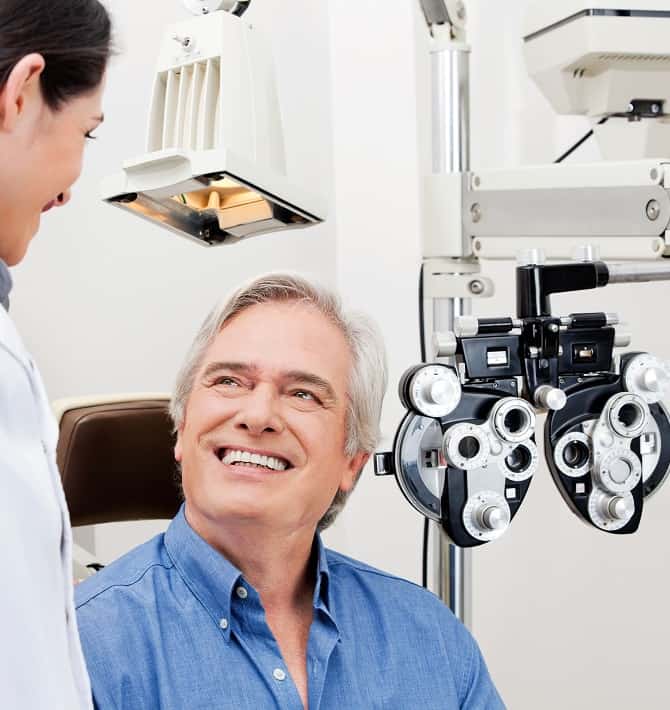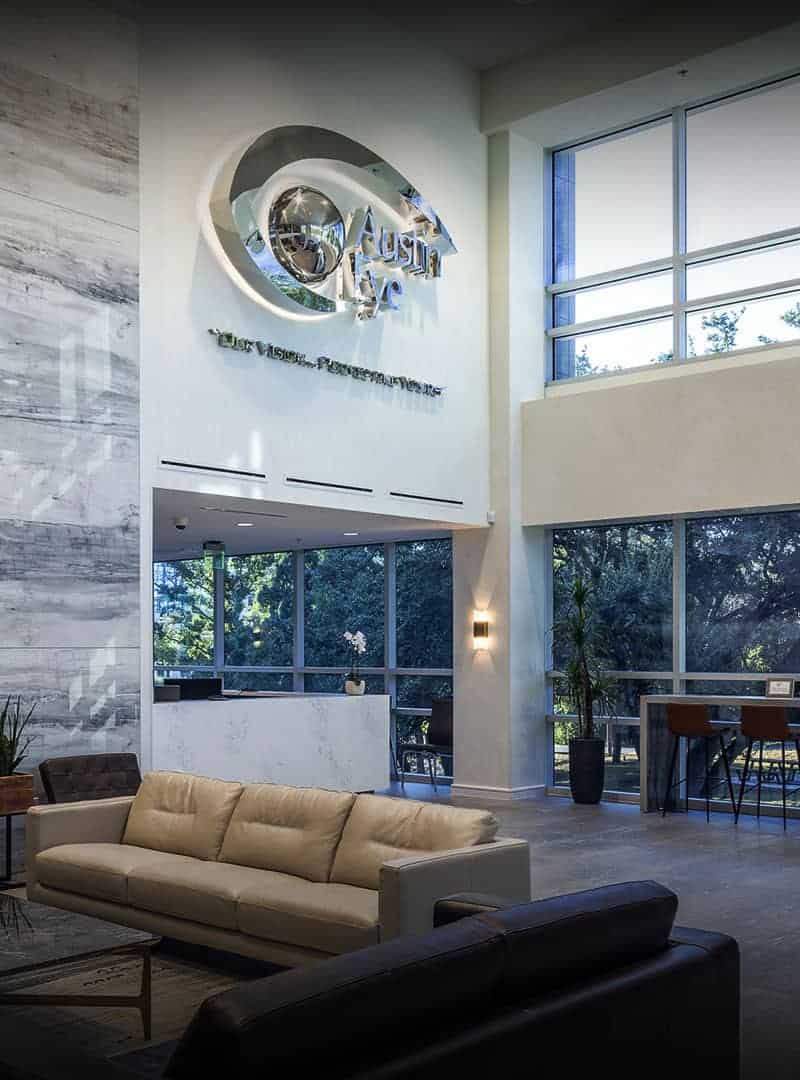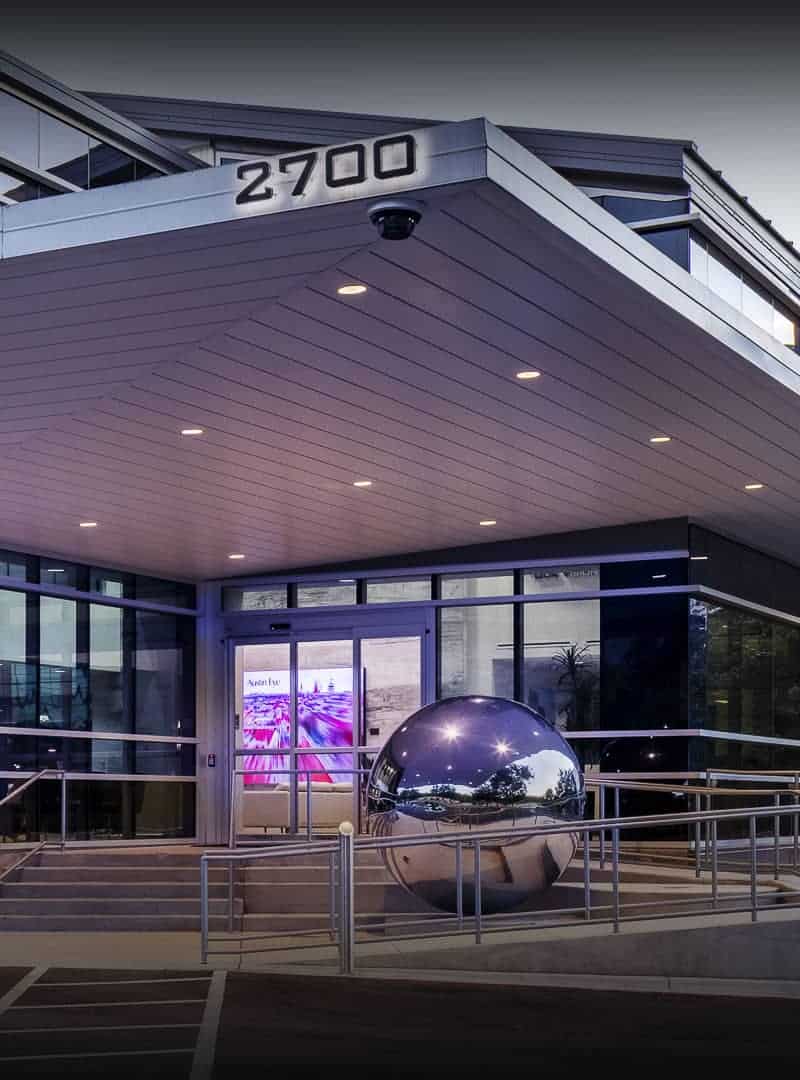Cataract Surgery Options – Austin Eye
CATARACT TREATMENT OPTIONS
There are three options:
1) Basic cataract surgery with a basic fixed-focus lens implant to see clearly with bifocal glasses.
2) Astigmatism-correcting cataract surgery to see clearly far away without glasses OR
3) Premium Cataract Surgery with an advanced technology lens designed to enable you to see clearly near and far without glasses.
For Austin Premium Cataract Surgery patients, we use a variety of lens implants that correct astigmatism and enable individuals to focus on far and near objects without relying on glasses in most instances.
In general, there are three “zones of vision” that we use to see the world around us:
- Near (reading print on a piece of paper)
- Mid-range (computer distance)
- Far (TV and street signs while driving)
To summarize, when you have a cataract you have options. Our physicians and staff will help guide you to the option that works best to suit your lifestyle.
BASIC CATARACT SURGERY
Basic cataract surgery with a basic fixed-focus lens gives good vision at one of three zones. During basic cataract surgery, your doctor will safely remove your cataract, and in its place a basic fixed-focus lens implant will be used to correct your vision. With basic cataract surgery, you will see clearest far away, but less clear at mid-range and blurry for near. Basic lens implants do not correct astigmatism. If a patient has astigmatism, which means that the front part of the eye is shaped more like the back of a spoon rather than round like a ping pong ball, then the patient would most likely end up in bifocals after surgery for best corrected vision. Individuals with basic cataract surgery usually see fairly well far away without glasses. In order for your eye to see all three zones, you will need glasses. Individuals receiving basic cataract surgery have a 90-95 percent chance of still needing to wear glasses to read or bifocals to see their best. Approximately 5 percent of our basic cataract surgery patients are glasses-free for all three zones of vision after cataract surgery to both eyes. If you have a visually significant cataract as determined by your eye exam with your ophthalmologist and you have medical insurance, then basic cataract surgery is typically covered by your medical insurance. You would just pay your copayment and unmet medical insurance deductible.
ASTIGMATISM-CORRECTING CATARACT SURGERY
Austin Eye also offers this type of premium cataract surgery for patients that have large amounts of astigmatism who want to see clearly far away without glasses but don’t mind using glasses to enable them to see up close. In this type of cataract surgery, we surgically reduce or eliminate your astigmatism by either reshaping the cornea a diamond blade, or using an astigmatism-correcting lens implant or both. With the eye set to see normally far away and the astigmatism corrected most patients see very clearly far away without glasses to drive or watch TV but need reading glasses to see clearly at the computer and up close. Most astigmatism-correcting lens implants do not allow an adjustable range of focus. Therefore, though your vision will be clear far away without glasses, you would require glasses to see up close (near) and at the computer (mid-range) after cataract surgery. If you have a visually significant cataract as determined by your eye exam with your ophthalmologist and you have medical insurance, then your cost for the cataract surgery astigmatism-correcting package is $4,000/eye in addition to your co-payment and unmet medical insurance deductible.
PREMIUM CATARACT SURGERY
Premium cataract surgery is designed to enable you to see both far and near with minimal or no dependence on glasses. Premium cataract surgery involves astigmatism correction as well as the use of advanced-technology lens implants designed to provide clear vision over a broader range of distances than basic lens implants. They will provide at least two zones of clear focus. Premium lenses will provide excellent vision far and near for driving, watching TV or reading small print up close, but you may need to wear over-the-counter reading glasses for some situations.
If you have a visually significant cataract as determined by your eye exam with your ophthalmologist and you have medical insurance, then premium cataract surgery with an advanced technology lens has an out-of-pocket cost of $5,100/eye in addition to your copayment and unmet medical insurance deductible.
 *Fees cover: surgeon’s fee, operating room/surgical center fee, anesthesia fees, and additional refractive surgical procedures (Eg YAG capsulotomy, LASIK, intraocular lens exchange not including the light adjustable lens) for one year after the original surgical date
*Fees cover: surgeon’s fee, operating room/surgical center fee, anesthesia fees, and additional refractive surgical procedures (Eg YAG capsulotomy, LASIK, intraocular lens exchange not including the light adjustable lens) for one year after the original surgical date  *Fees cover: surgeon’s fee, operating room/surgical center fee, anesthesia fees, and additional refractive surgical procedures (Eg YAG capsulotomy, LASIK, intraocular lens exchange not including the light adjustable lens) for one year after the original surgical date
*Fees cover: surgeon’s fee, operating room/surgical center fee, anesthesia fees, and additional refractive surgical procedures (Eg YAG capsulotomy, LASIK, intraocular lens exchange not including the light adjustable lens) for one year after the original surgical dateLight Adjustable Lens by RxSight video
WHAT HAPPENS DURING MY EXAMINATION?
During your eye exam, we will utilize advanced diagnostic tests to determine which cataract surgery option would best suit your needs. There are varying reasons that determine the type of procedure we offer a patient. Since everyone’s eyes and visual needs are different, your surgeon will evaluate your eyes and inform you what your best option is. When a patient is interested in premium cataract surgery, we perform more extensive testing to make sure the patient is a good candidate. One of the tests that we perform takes a high-definition picture of the back part of the patient’s eye known as the macula. The doctor will evaluate the health of the patient’s eye to see if a premium lens will be of benefit to the patient. We also perform a test known as cornea topography, which takes a topographical map of the cornea (front window of the eye) and maps out and quantifies your astigmatism. These tests allow the surgeon to see exactly which procedure will best benefit your eyes. For patients age 45 and older, we carefully explain the options, risks and benefits to each patient.
PAYING FOR CATARACT SURGERY
Austin Eye offers a convenient monthly payment plan through a company known as CareCredit. CareCredit is like a medical credit card which can be used to pay for your surgery. You can pay for your surgery over a 24-month period in convenient monthly payments without interest on the amount you finance. CareCredit can be used for any type of procedure you decide to have done, and it is a convenient way to make elective surgery more affordable for you. When you come in for your consultation, we can contact your insurance provider to obtain an estimate of costs for your surgery.
To summarize, when you have a cataract you have options. Our physicians and staff will help guide you to the option that works best to suit your lifestyle. Fortunately, cataract surgery is now a quick, painless, safe outpatient procedure done routinely by Dr. Shannon Wong and Dr. John Odette. Cataract surgery is performed weekly Monday-Thursday by our team of ophthalmologists.
WHAT HAPPENS DURING CATARACT SURGERY?
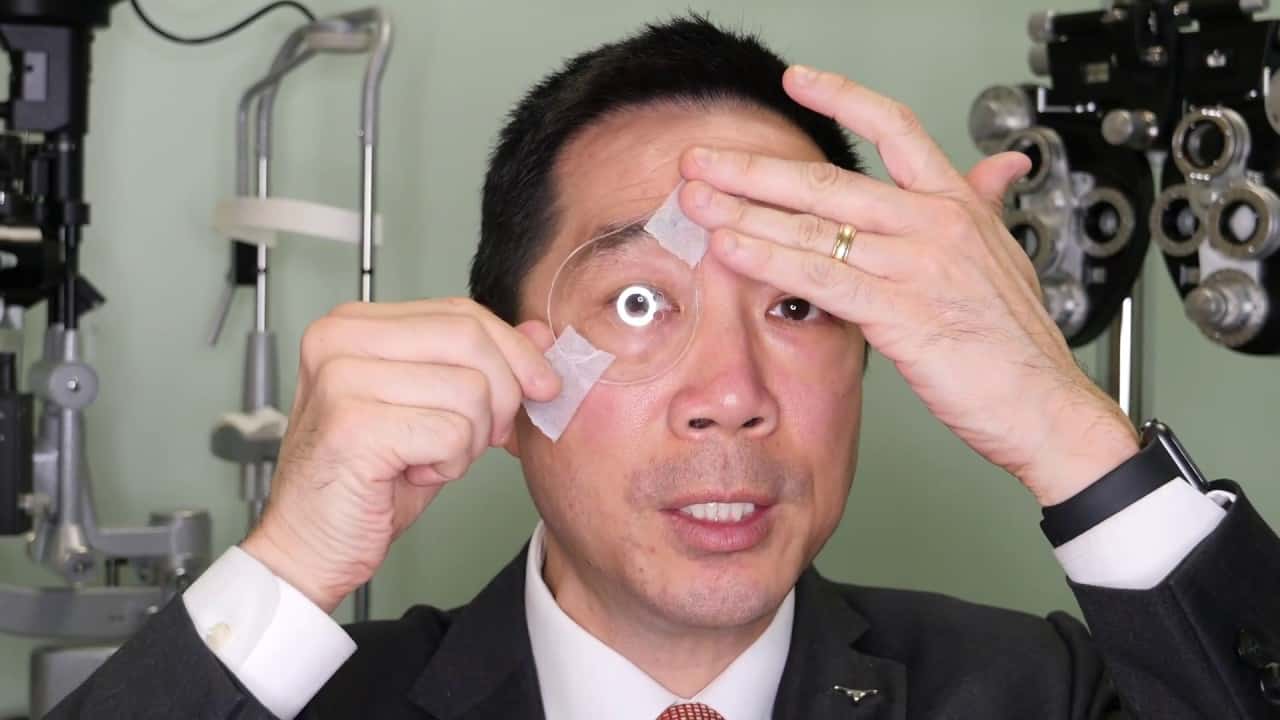
Cataract surgery is one of the most common surgical procedures performed in the United States. Our Austin surgeons have performed tens of thousands of cataract surgeries and are among the most experienced in the country. Your cataract surgery is a convenient outpatient procedure. We will numb your eyes with anesthetic eye drops. We will give you a valium tablet prior to surgery to ease your nerves and help you stay relaxed and calm during your procedure. Our nursing and surgical team will help you feel at ease before, during and after your surgery.
The procedure is painless and done under local eye drop anesthesia, usually taking 10-15 minutes, during which time the cataract is removed from the eye with microscopic instruments in a sterile operating room. The cataract is removed from inside a clear capsular sac that holds the natural lens inside the eye. A clear intraocular lens (IOL) implant is then inserted into the capsular sac. The eye typically seals naturally after surgery without the need for stitches.
After cataract surgery, vision improves rapidly and there is typically minimal to no discomfort. You may use your eye, wash your face, shower and do normal at-home activities the day of surgery. The day after surgery, vision is good to excellent and most individuals can drive and return to normal activity.
At Austin Eye, we realize that having your vision restored through lens replacement is a life-changing decision that will improve your quality of life. We appreciate the trust you have placed in us in choosing our practice and surgeons to correct your vision.
Cataract surgery results in safe and successful outcome in approximately 98-99 percent of eyes treated. Like any surgical procedure, there are risks. During your visit with Dr. Shannon Wong or Dr. John Odette, the risks, benefits and surgical alternatives will be discussed with you. Fortunately, cataract surgery is one of the most common and safest surgical procedures performed in the U.S. today, with over 4 million procedures performed annually.
Approximately 40 percent of patients having cataract surgery choose basic fixed-focus lens implants. With such lens implants, reading glasses and/or bifocals are usually required to achieve one’s best vision after surgery. Approximately 60 percent of patients having cataract surgery choose state-of-the-art premium lens implants to help them see younger and become less dependent on glasses altogether. The individuals who desire clear vision near, far and in between without glasses after cataract surgery can choose to upgrade to one of these state-of-the-art lenses.
Cataract surgery for most of our cataracts Austin patients is performed at Austin Eye Laser and Surgicenter, located at our 2700 Bee Cave Road, Austin, TX 78746 building. This specially designed surgical center is dedicated exclusively to eye surgery and is equipped with the most advanced cataract surgery instrumentation and equipment available. The Austin Eye Laser and Surgicenter is certified by the Accreditation Association for Ambulatory Health Care (AAAHC) and Medicare.
For more information about cataracts and/or cataract surgery, please call 512-250-2020 or email the physicians on staff to schedule your initial consultation.
WHAT IS THE “RIGHT TIME” TO HAVE CATARACT SURGERY?
Cataract surgery is indicated when one’s vision is sufficiently blurry to impair one’s ability to see comfortably while performing their usual activities. Usually your ophthalmologist will try to prescribe glasses to optimize vision before proceeding with cataract surgery. The timing of cataract surgery is dependent on your decision to proceed with surgery… there is no magic time by which a cataract must be removed from the eye. In fact, if a patient is happy with his or her blurred vision, the cataract can be left alone. As the person ages, the cataract will generally progress and the lens will become cloudier, further impairing vision.
Patients who choose cataract surgery do so because of one of two reasons: 1) Intolerance of the blur that the cataract creates (e.g., difficulty driving, reading, seeing the world clearly, watching TV) or 2) The desire to improve overall vision and reduce or possibly eliminate dependence on glasses. In essence, the ability to see younger without glasses is often a powerful incentive to pursue cataract surgery with a premium lens implant (IOL).
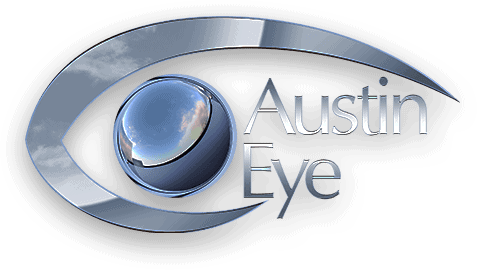

The Mitchel and Shannon Wong Eye Institute

The Mitchel and Shannon Wong Eye Institute, recently created at the Dell Medical School, is poised to become a leading-edge center for training future ophthalmologists and providing patients with the best medical and surgical eye care possible.
Contact Austin Eye Today
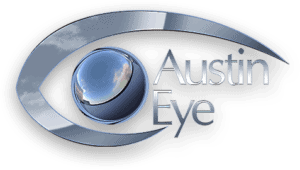
11901 Jollyville Road
Austin, TX 78759
Phone: (512) 250-2020
Fax: (512) 250-2612
Click here to fly-through our Austin Eye locations
Office Hours
Monday – Thursday 8am – 6pm
Friday 8am – Noon
Saturday/Sunday Closed
Northwest Office
Westlake Office
Westlake Office

